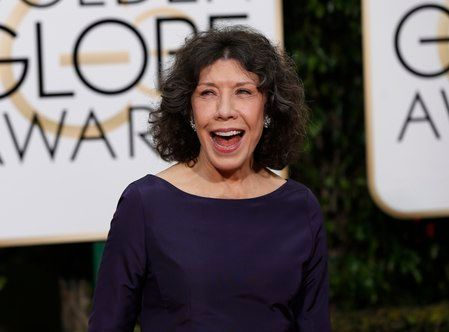Advertisement
Joanna Hogg delves into the dark depths of her latest film, The
By Ethan Blake
9 min read
Advertisement - Continue reading below

“I Go Very Deep”: Joanna Hogg on Her Gothic New Film, The …
1. Introduction: Joanna Hogg and Her Innovative Approach to Filmmaking
Joanna Hogg is unanimously considered as one of the most original contemporary directors in the cinematic world. Her filmmaking approach, characterized by its subtlety and sensitivity, draws the audience into her story’s universe in a gentle but profound manner.
Her visual aesthetic is well researched and clearly represents the essence of her narrative. From wide-angle landscape shots to intimate close-ups, each frame in her films serves a specific purpose, contributing to the larger plot.
Hogg’s innovative style also sets her apart from other directors. Unlike traditional filmmakers, she often turns conventions upside-down, combining genres, playing with time sequences, or breaking the ‘fourth wall’.
Consider Hogg’s latest film, “The Souvenir Part II”. In this sequel to her 2019 drama, she juxtaposes different genres – thriller, drama, and dark comedy – resulting in a carefully crafted piece of cinematic art.
- Hogg’s direction style is subtle yet profound.
- Every shot in her film serves a purpose.
- She breaks conventions, playing with genres and timelines.
- “The Souvenir Part II” is a perfect example of her artistic blend.
- The film combines elements of thriller, drama, and dark comedy.
- It is described as a meticulously crafted piece of cinematic art.
2. Delving Deep into Storylines
Joanna Hogg is notable for her deep-dive approach to scripting. She tends to deeply explore the characters, relationships, and their environments – presenting a rich view of the storyline.
She’s known to draw inspiration from personal experiences, thus her films are often semi-autobiographical in nature. By bringing her own experiences into her work, Hogg adds a certain authenticity that is hard to replicate.
Another aspect of Hogg’s writing style that should be noted is her penchant for complex and layered storytelling. Even seemingly simple narratives are filled with intricate details and nuanced character development that make you think long after the movie has ended.
Take, for instance, her 2007 debut film “Unrelated”. A drama centered around a woman struggling with early-onset menopause while on a summer vacation, Hogg skillfully encapsulates the protagonist’s internal turmoil and queerness with profound layers of complexity.
- Hogg deeply explores characters, relationships, and their settings.
- Her films often draw from her personal experiences making them semi-autobiographical.
- She masters complex and layered storytelling.
- “Unrelated” captures a woman’s struggle with intimate nuances.
- The film is filled with intricate details about the protagonist’s internal conflict.
- It compels viewers to think about the narrative even after it ends.
3. Drawing Inspiration from Personal Experiences
While many filmmakers create a clear divide between real-life experience and on-screen fiction, Joanna Hogg embraces her past, using it as fuel for her art. Her authentic approach adds unique depth and relatability to her narratives.
Hogg does not shy away from exploring darker aspects of her life. Her willingness to delve into her own vulnerabilities endears her to audiences who appreciate the bravery and honesty in her work.
Also notable is how she incorporates these experiences into her movies. Rather than creating direct autobiographies, she weaves elements of her lived experiences into her characters’ stories, resulting in compelling and nuanced depictions of human life.
Consider her earlier hit release – “Archipelago”. It’s a subtle drama woven around an unhappy family during a holiday, reflecting Joanna’s own childhood spent in the chilly isles.
- Hogg’s past experiences bring authenticity to her narratives.
- She openly explores darker aspects of her life in films.
- Hogg’s expertise lies in weaving her lived experiences into characters’ stories.
- “Archipelago” very much reflects her own childhood holidays.
- The film is an insightful depiction of an unhappy family during a holiday.
- The real-life essence enhances the relatability factor for audiences.
4. The Use of Non-Professional Actors
Often, film success is measured by high-profile castings. However, Hogg prefers to work with non-professional actors, viewing it as an opportunity to mine the raw talent and authentic reactions that seasoned actors might not deliver.
This unconventional approach also allows her to maintain creative control over the narrative without being influenced by pre-conceived ideas or drama schools’ acting styles.
Plus, using non-experienced performers can lend an organic feel to scenes, heightening the realism of her narratives.
In “Exhibition”, Hogg cast artists Michael and Dina Lawson in the main roles. Despite being their first acting gig, they delivered incredibly natural performances, adding further depth to Hogg’s realistic narrative style.
- Hogg often chooses non-professional actors for her projects.
- This strategy allows for more authentic reactions on-screen.
- It gives her full control over the narrative without any influence from established acting methods.
- Fresh performers add an organic feel to scenes.
- In “Exhibition”, artists Michael and Dina brought natural performances despite their lack of prior acting experience.
- Their amateur status added to the realism of the film.
5. Dealing with Complex Themes
Joanna doesn’t shy away from tackling difficult and often under-discussed subjects in her films. By doing so, she creates a platform for viewers to ponder issues they may not have considered otherwise.
Whether it’s the existential crisis of middle age or the struggle with mental health, Joanna skillfully navigates sensitive topics, providing fresh perspectives through her unique lens.
Moreover, these complex themes also help to create a profound emotional connection with her audience, making her narratives truly compelling.
One can witness this in “The Souvenir”, where Julie, the protagonist, grapples with identity, love, loss, and personal growth amidst trying times.
- Hogg bravely confronts complex and challenging themes.
- Her films offer fresh perspectives on under-discussed subjects.
- The complex themes establish deep emotional connections with audiences.
- “The Souvenir” is an exploration of identity, love, loss, and personal growth.
- The film navigates these sensitive topics with skill and insight.
- Viewers are left to reflect upon unexplored aspects of life.
6. Long-Term Collaborations with Actors
Just as Joanna takes a unique approach to casting non-professionals, she also demonstrates an affinity for long-term collaborations. Maintaining ongoing relationships with actors allows her to fully develop the complexity of characters over time.
Such collaborations lend familiarity and continuity to her works. The same faces recurring through different movies add an additional layer of cohesion to Hogg’s filmography.
Additionally, cultivating these long-term relationships can lead to more genuine performances, given the trust built between the actors and director.
Actor Tom Hiddleston and Hogg have worked together repeatedly, starting from her first feature film “Unrelated”. Their long-term collaboration has allowed for a depth of character development seen across their joint projects.
- Hogg partnerships with actors offer continuity and depth.
- Hogg’s collaborations lead to closer and more trusted actor-director relationships.
- The familiarity from these repeated alliances adds a unified layer throughout her works.
- Tom Hiddleston is one of Hogg’s frequent collaborators.
- They first worked together in “Unrelated”.
- Their partnership has allowed for multi-faceted character development over several projects.
7. Artistic Freedom
Enjoying artistic freedom appears to be a crucial aspect for Joanna, which she actively cultivates throughout her filmography. This liberty allows her to craft narratives without the pressure of delivering commercially successful hits.
It also enables her to take risks in terms of filming techniques, storylines, or casting choices, further enriching her unique filmmaking style.
This independence gives her real potential to test new paths. She may create something critically acclaimed, or her venture might fail by conventional standards. For her, what matters more is the journey and not just the end goal.
In “Exhibition,” Hogg chose an experimental approach with a considerable risk. But it did not deter her from creating a bold narrative where the house became a silent but salient character.
- Artistic freedom is critical for Joanna Hogg’s unique storytelling style.
- Her liberty allows for risk-taking in filming strategies, plots, and casting.
- She values the journey of creation, not just the result.
- “Exhibition” demonstrates Hogg’s adventurous spirit with its experimental narrative trope.
- Despite potential risks, she dared to make the set house a significant character.
- This risk-taking enriches her unique filmmaking flair.
8. Films as Visual Poetry
One common thread in Joanna’s film is the recurring theme of visual poetry. She has a knack for creating cinematic pictures that speak to the audience as much as, if not more than, the spoken dialogue does.
Her attention to detail in every shot, her choice of color pallets, her mastery over lighting; all add to the poetic visual aesthetics she conjures within her films.
Subsequently, this approach imbues an overall sense of enchantment and depth in the narratives she brings to life on screen.
In “The Souvenir Part II”, despite the omnipresent personal struggle and ache depicted, the film remains an elegant piece of work filled with richly detailed landscapes drenched with implications.
- Hogg’s films can be referred to as “visual poetry.”
- She pays meticulous attention to each shot, color palette, and lighting techniques.
- These aspects contribute to the enchanting aesthetic qualities of her films.
- “The Souvenir Part II” encapsulates her poetic visualization where personal struggle bathes in elegance.
- The movie unfolds with beautifully detailed sceneries teeming with implications.
- The enriched visuals add depth to the narrative.
9. Authenticity Above All
Throughout her filmmaking journey, authenticity remains a more significant achievement for Hogg than commercial success. She strives to present reality as truthfully as possible – even when it involves showing harsh situations or uncomfortable truths.
This commitment to authenticity allows her to create complex narratives that resonate deeply with audiences by focusing more on emotional honesty rather than terms of box office expectations.
Furthermore, this also gives the actors in her films the freedom to explore their characters more deeply.
“Exhibition” serves as an excellent illustration of this principle. The characters are often shown in awkward, uncomfortable moments, amplifying the rawness and purity of emotions over formulaic plot points.
- Hogg values authenticity more than commercial success.
- She strives to depict reality in its raw form, even if it includes harsh truths.
- This approach resonates with audiences through emotional honesty.
- “Exhibition” aptly illustrates Hogg’s commitment to authenticity.
- The characters are caught in raw and uncomfortable moments, dismissing standard plot points.
- Hers is a commitment to pure narrative storytelling, without the restrictiveness of box office formulas.
10. Departure from Conventional Storytelling
While many filmmakers follow traditional storytelling structures, Hogg prefers non-linear formats that provide fresh narratives and allow her to explore complex themes in greater depth.
Her films come without formulaic plots or predictable story arcs. They flow naturally, allowing for genuine human experiences to unfold on screen.
Despite being unconventional, this approach never feels abrupt or forced — instead, it adds another layer of authenticity to Hogg’s stories.
For instance, in “Archipelago”, we see the fragmented structure applied, where viewers are left to piece together the film based on small “peninsulas” of narrative rather than a single cohesive storyline.
- Hogg often departs from conventional storytelling structures.
- Non-linear formats enable her to delve into complex themes.
- Her films lack prediction, flowing naturally to showcase genuine human experiences.
- “Archipelago” perfectly captures the non-traditional storytelling approach with its fragmented structure.
- The film invites viewers to create a cohesive interpretation out of several narrative fragments.
- Though unconventional, this method enhances her narratives’ authenticity.
| Summary Table | |
|---|---|
| Filmmaking Style | Discussed Aspects with Examples |
| Visual Aesthetics and Innovation | “The Souvenir Part II” shows Hogg’s approach to combining genres. |
| Deep-Dive Storylines | Hogg’s debut film “Unrelated” signifies her penchant for complex storytelling. |
| Inspiration from Personal Experiences | “Archipelago” gives a glimpse into Joanna’s childhood memories. |
| Casting Non-Professional Actors | “Exhibition” featured artists Michael and Dina Lawson in their first acting roles. |
| Addressing Complex Themes | “The Souvenir” depicts the protagonist’s journey through identity, love, loss, and personal growth. |
| Long-term Collaborations | The creative alliance between Tom Hiddleston and Hogg demonstrates this facet visibly. |
| Artistic Freedom | The experimental narrative in “Exhibition,” where a house becomes a character, evidences the extent of liberty Hogg takes into account while filming. |
| Visual Poetry | “The Souvenir Part II” signifies her knack for creating visually poetic narratives. |
| Authenticity Signature | “Exhibition” underscores the significance of authenticity over commercial elements in her filmmaking process. |
| Non-Linear Storytelling | Hogg’s non-linearity is evident in “Archipelago”, where viewers piece together the narrative from fragmented ‘peninsulas’ of story moments. |
Advertisement - Continue reading below










